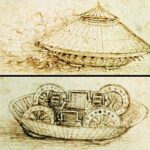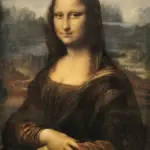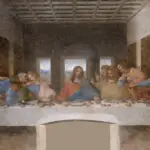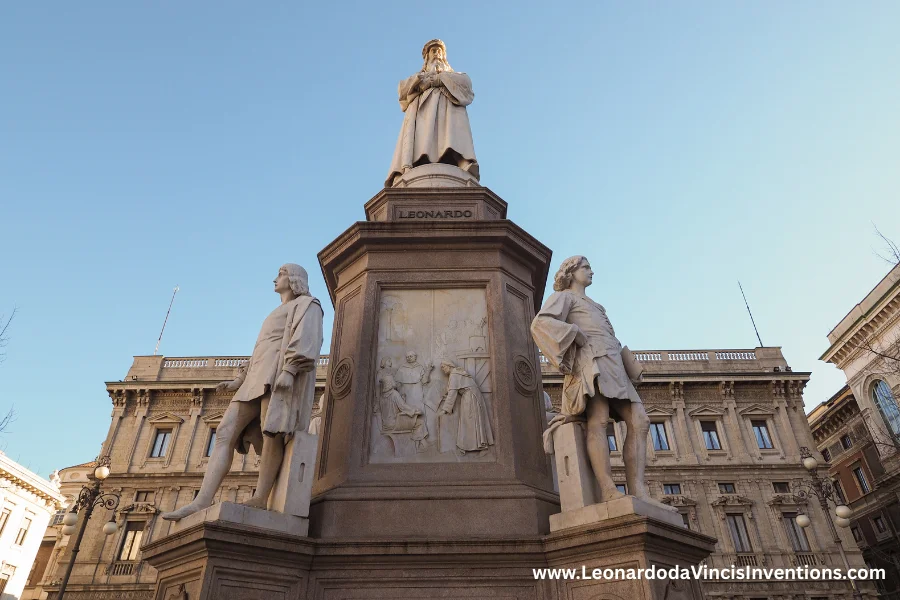
Leonardo da Vinci was a Renaissance artist and inventor who changed history in science, engineering, and art. This overview will show why his influence remains important today.
You’ll learn how he shaped the world through creative ideas, inventions, and famous masterpieces.
Leonardo’s impact on history appears in his innovative paintings, scientific studies, and visionary designs. His studies in anatomy, civil engineering, and technology, along with works like the Mona Lisa, make him a true pioneer.
He conceptualized the first helicopter and advanced knowledge in anatomy and optics. His work continues to inspire new generations.
Leonardo da Vinci Overview: The Renaissance Polymath
Leonardo da Vinci stands out as a remarkable figure of the High Renaissance. His life reflects the merging of artistic achievements and scientific studies.
He always showed a drive for discovery.
Masterpiece Creations: Mona Lisa, The Last Supper, and Vitruvian Man
Leonardo’s reputation as a painter and draughtsman is built on three masterpieces. The Mona Lisa impresses viewers with its use of sfumato, a soft blending of colors that brings realism to skin and landscape.
The Last Supper shows his skill with perspective and emotional storytelling. It captures a key moment from the Christian faith.
His Vitruvian Man drawing combines the study of the human body with mathematical proportions. This work symbolizes the link between art and science.
These masterpieces highlight Leonardo’s artistic techniques and his research into anatomy and proportion.
Da Vinci’s Roles: Inventor, Scientist, and Engineer
Leonardo became a visionary inventor, scientist, and engineer. He filled notebooks with sketches of flying machines, war devices, and tools.
Most inventions remained on paper, but his drawings show his deep exploration of mechanics, hydraulics, and flight. His engineering projects and scientific studies made significant contributions during the Renaissance.
He observed and experimented with technology, often dissecting bodies to understand movement and function. These investigations led to designs that were far ahead of their time.
Humanism and the Interdisciplinary Approach
Leonardo embodied Renaissance humanism, where curiosity about nature and mankind fueled artistic and scientific work. As a polymath, he believed that art, science, and technology belonged together.
He observed details in plants, animals, and people, merging fields in his research. His notebooks contain sketches and theories about anatomy, geology, weather, and mechanics.
Leonardo’s interdisciplinary approach created ideas that influenced his era and modern science. The integration of art and science shaped his legacy as a Renaissance polymath.
Leonardo da Vinci Overview: Legacy and Influence
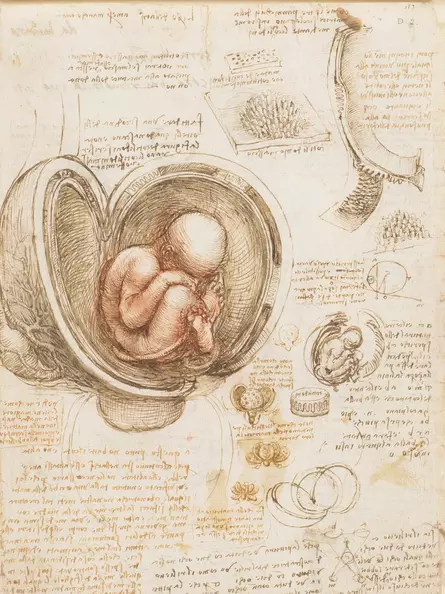
Leonardo’s drawing of a fetus in the womb
Leonardo da Vinci left a strong mark on history as a High Renaissance artist, scientist, and innovator. The effects of his creative work and research continue to inspire art, technology, and the study of nature.
Artistic Achievements and Timeless Influence
Leonardo was known as a creator of masterpieces, including the Mona Lisa and The Last Supper. His works became models of Renaissance humanism, showing emotion and realistic perspective.
Leonardo’s use of sfumato brought a softness and realism to his art. He influenced generations of artists by integrating science and observation into his paintings.
The complex composition and perspective in his art raised the standard for future painters. As a High Renaissance artist, Leonardo set new standards in creative vision and technique.
Science, Anatomy, and Exploration of Nature
Leonardo da Vinci was more than a painter. He explored the natural world as a scientist and anatomist, using research and direct observation.
His anatomical drawings and study of the human body were far ahead of his time. He filled notebooks with sketches of muscles, skeletons, and organs.
Leonardo’s drive to understand nature led to research into optics, hydrodynamics, and mechanics. He studied plants, animals, and the flow of water.
This commitment to exploring nature helped lay the foundation for modern science.
Creativity, Imagination, and Genius
Leonardo’s creativity went beyond his art. As a polymath, he designed inventions like flying machines, a tank, and early calculators.
Most of these were never built, but his engineering projects and sketches showed a visionary mind. Leonardo’s notebooks reveal an approach connecting art and science.
He worked as a draughtsman and theorist, always imagining new ideas. This legacy continues to shape fields such as design and engineering today.
Leonardo da Vinci Overview: Impact on Art and Science
Leonardo da Vinci’s work as a painter, inventor, and scientist shaped art and science for centuries. His curiosity-driven research and approach led to artistic achievements and scientific studies.
Integration of Art and Science
Leonardo combined observation, experimentation, and creativity, connecting art and science in new ways. He used his skills as a draughtsman, anatomist, and engineer to advance both fields.
His anatomical drawings and notebooks recorded the study of the human body and natural forms. Techniques like perspective and sfumato made his paintings, including the Mona Lisa, appear lifelike.
His scientific approach to art inspired the spread of Renaissance humanism. Leonardo’s study of nature led to inventions and designs ahead of their time, influencing engineering and biology.
His notebooks and sketches remain valuable resources for researchers, as demonstrated in this collection from the Museum of Science.
Patronage, Florentine Origins, and the Renaissance Context
Leonardo’s Florentine origins placed him at the center of the Renaissance, a period marked by humanism and the rebirth of the arts and sciences. Wealthy patrons such as the Medici family and Duke Ludovico Sforza supported his projects.
Under this patronage system, Leonardo worked on masterpieces such as The Last Supper, conducted scientific research, and undertook engineering projects. Patronage allowed him to experiment and explore new ideas, combining his skills as a painter, architect, and visionary.
Connections with other artists and thinkers encouraged collaboration and the exchange of knowledge.
Legacy in Modern Times
Leonardo’s influence reaches modern art, science, and technology. As a polymath and lifelong learner, he set a standard for curiosity, observation, and experimentation.
His unfinished works, engineering designs, and artistic techniques still inspire artists, scientists, and engineers. His notebooks revealed ideas in anatomy, mechanics, and flight.
Masterpieces like the Mona Lisa remain central to the history of art. Leonardo’s legacy shows the value of an interdisciplinary approach to learning and creativity.
Frequently Asked Questions
Leonardo da Vinci was a Renaissance master who changed both art and science. His creative talents, inventions, and curiosity still inspire people around the world.
What is a summary of Leonardo da Vinci?
Leonardo da Vinci was an Italian artist, inventor, and scientist from the 15th and 16th centuries. He is best known for masterpieces like the “Mona Lisa” and “The Last Supper.”
Leonardo also studied anatomy, engineering, and nature. He made important discoveries during his lifetime.
Did Leonardo da Vinci have ADHD?
Some modern experts suggest that Leonardo showed signs similar to Attention Deficit Hyperactivity Disorder (ADHD). He often started many projects but finished only a few.
However, no medical proof or clear historical record confirms that he had ADHD.
What are 5 facts about Leonardo da Vinci?
- Leonardo was born in 1452 in Vinci, Italy.
- He painted the “Mona Lisa,” one of the most famous portraits in history.
- He designed machines such as early versions of bicycles, helicopters, and tanks.
- Leonardo studied human anatomy by dissecting bodies.
- He wrote and drew in thousands of pages of notebooks, often using mirror writing.
What are 3 things Leonardo da Vinci was famous for?
Leonardo is famous for painting the “Mona Lisa.” He created detailed studies in science and anatomy.
He invented machines far ahead of his time and is recognized as a key figure of the Renaissance.
What is Da Vinci’s IQ?
There is no official record of Leonardo da Vinci’s IQ. Some modern sources have guessed numbers over 180 based on his achievements, but these are only estimates.
Comparing IQs across different centuries is a complex and unreliable endeavor.
Where is Mona Lisa buried?
The woman believed to be the model for the “Mona Lisa,” Lisa Gherardini, is thought to be buried in Florence, Italy. Her exact grave is not confirmed.
Leonardo himself is buried at the Château d’Amboise in France.
How did Leonardo impact the world?
Leonardo da Vinci revolutionized the way people perceive art and science. His realistic paintings set new standards.
His notebooks on anatomy, engineering, and mechanics advanced the field of science. He helped bridge the gap between scientific study and artistic creation.
His influence is evident in both the arts and scientific fields.
What is the plot of Leonardo?
“Leonardo” is a television drama series that explores the life of da Vinci. It blends fact and fiction to tell the story of his career, art, and relationships.
The show highlights his time in Florence, Milan, and other Italian Renaissance cities.
What are 5 characteristics of Leonardo da Vinci?
- Curiosity — He was always eager to understand how things worked.
- Creativity — He imagined new machines and ideas.
- Observation — He paid close attention to details, especially in nature and the human body.
- Intelligence — He was quick to learn and adapt.
- Discipline — He filled thousands of pages with notes, drawings, and studies.
Is The Da Vinci Code a summary?
“The Da Vinci Code” is a modern fiction novel by Dan Brown. It tells the story of a symbologist who uncovers hidden messages in the art of Leonardo da Vinci.
These clues lead to a larger mystery. The book does not focus on Leonardo himself, but his works play a significant role in the plot.
 I’m Leonardo Bianchi, the mind behind Leonardo da Vinci's Inventions. Thanks for visiting.
I’m Leonardo Bianchi, the mind behind Leonardo da Vinci's Inventions. Thanks for visiting. 
